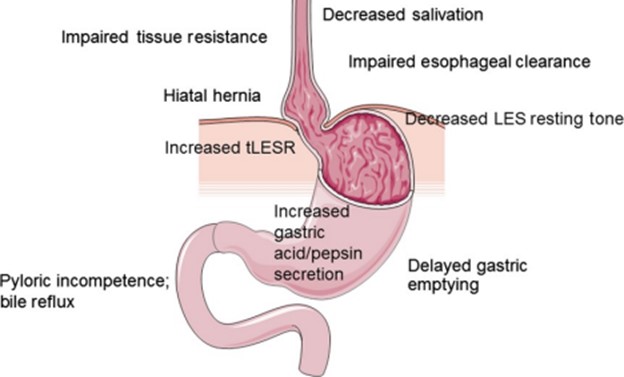The nurse is planning to teach the patient with gastroesophageal reflux disease (GERD) about foods or beverages that decrease lower esophageal sphincter (LES) pressure. What should be included in this list (select all that apply)?
Alcohol
Chocolate
Peppermint
Citrus fruits
Cola sodas
Fatty foods
Correct Answer : A,B,C,D,E,F
1. Alcohol: Alcohol can relax the LES, leading to increased reflux symptoms. 2. Chocolate: Chocolate contains compounds that can relax the LES and contribute to reflux symptoms.
3. Peppermint: Peppermint, including peppermint oil and peppermint-flavored foods, can relax the LES and worsen reflux symptoms.
4. Citrus fruits: Citrus fruits and juices, such as oranges, grapefruits, and lemons, are acidic and can irritate the esophagus, exacerbating GERD symptoms.
5. Cola sodas: Cola sodas, including both regular and diet varieties, can contribute to reflux symptoms due to their carbonation and acidic content.
6. Fatty foods: High-fat foods, such as fried foods, fatty meats, and full-fat dairy products, can delay stomach emptying and increase pressure on the LES, leading to reflux.

Nursing Test Bank
Naxlex Comprehensive Predictor Exams
Related Questions
Correct Answer is D
Explanation
Patient-centered care involves actively involving the patient in their care and considering their preferences, values, and goals. By discussing dietary preferences with the client, the nurse is demonstrating a patient-centered approach. This documentation indicates that the nurse took the time to engage in a conversation with the client to understand their dietary preferences,
which can help tailor the care plan to meet the client's individual needs and preferences. "Steady gait observed when ambulating" focuses on the nurse's observation and assessment but does not specifically involve the patient's preferences or goals.
"Social worker paged for consultation" indicates collaboration with another healthcare professional but does not necessarily reflect the patient's active involvement or preferences. "Nursing literature reviewed for best practice approaches" highlights evidence-based practice but does not directly involve the patient's preferences or engagement in decision-making.
Correct Answer is ["C","D","E"]
Explanation
Crackles and wheezing indicate the presence of excessive mucus or secretions in the airways, which may require suctioning to clear the airway and improve breathing.
The presence of serosanguineous drainage on the tracheostomy dressing may indicate increased mucus production or bleeding, suggesting the need for suctioning to remove secretions or assess for any bleeding complications.
Regular suctioning is necessary to maintain a patent airway for patients with a tracheostomy. If suctioning was performed more than 4 hours ago, it may be time for another suctioning session to prevent the accumulation of secretions and maintain airway clearance. While a fever may indicate an underlying infection or inflammation, it does not specifically indicate the need for suctioning. The decision to suction should be based on the patient's respiratory assessment and the presence of respiratory symptoms.
While patient requests and preferences are important, the need for suctioning should be determined based on clinical indicators and assessment findings rather than solely relying on patient requests.
Whether you are a student looking to ace your exams or a practicing nurse seeking to enhance your expertise , our nursing education contents will empower you with the confidence and competence to make a difference in the lives of patients and become a respected leader in the healthcare field.
Visit Naxlex, invest in your future and unlock endless possibilities with our unparalleled nursing education contents today
Report Wrong Answer on the Current Question
Do you disagree with the answer? If yes, what is your expected answer? Explain.
Kindly be descriptive with the issue you are facing.
